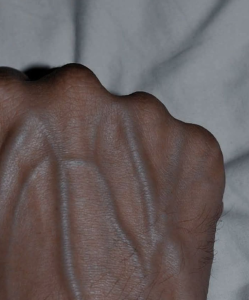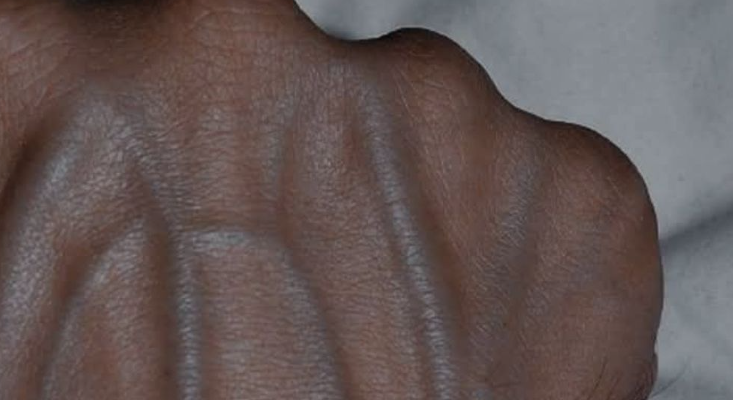
5 Health Conditions That Can Cause Visible Veins
Veins are an essential part of our circulatory system, responsible for carrying deoxygenated blood back to the heart. Under normal circumstances, veins are not highly visible on the surface of the skin. However, many people notice that their veins become more prominent at certain times. Sometimes, this is harmless—like after exercise, when blood flow increases. But in other cases, visible veins may signal an underlying health condition.
Neuroscientists and vascular specialists agree that changes in vein visibility should not be ignored, especially when they appear suddenly or are accompanied by other symptoms like pain, swelling, or skin discoloration. Below are five health conditions that can cause visible veins and what you should know about them.
1. Varicose Veins
Perhaps the most common condition associated with visible veins is varicose veins. These occur when the valves inside the veins fail to function properly, causing blood to pool rather than flow smoothly back to the heart. As a result, veins enlarge, twist, and bulge, often becoming dark blue or purple.
Symptoms:
-
Enlarged, twisted veins visible under the skin
-
Aching, heaviness, or burning sensation in the legs
-
Swelling around the ankles
-
Itching or skin changes near the affected veins
Causes and Risk Factors:
-
Genetics (family history of varicose veins)
-
Prolonged standing or sitting
-
Pregnancy (due to increased pressure and hormonal changes)
-
Obesity (extra weight puts pressure on veins)
-
Age (veins weaken over time)
Management and Remedies:
-
Wearing compression stockings to improve blood circulation
-
Elevating the legs after long periods of standing
-
Regular exercise, especially walking and swimming
-
Medical treatments such as sclerotherapy, laser therapy, or vein surgery in severe cases
Varicose veins are usually more of a cosmetic concern, but in some cases, they can lead to serious complications like ulcers or blood clots, which require medical attention.
2. Deep Vein Thrombosis (DVT)
While varicose veins are mostly superficial, deep vein thrombosis (DVT) is a much more dangerous condition. DVT occurs when a blood clot forms in a deep vein, usually in the legs. Although the clot itself may not always be visible, it can cause swelling and increased visibility of surrounding superficial veins.
Symptoms:
-
Swelling in one leg (rarely both)
-
Warmth and redness in the affected area
-
Pain or tenderness that often starts in the calf
-
Prominent veins on the skin surface near the clot
Risks:
The greatest danger of DVT is that the clot can break loose and travel to the lungs, causing a pulmonary embolism (PE), which can be life-threatening.
Risk Factors:
-
Prolonged immobility (long flights, bed rest after surgery)
-
Blood clotting disorders
-
Use of birth control pills or hormone therapy
-
Obesity and smoking
-
Pregnancy
Management:
-
Immediate medical treatment with anticoagulant medications
-
Compression stockings to prevent swelling and improve blood flow
-
Lifestyle changes like avoiding long periods of inactivity
Because DVT can be fatal if untreated, visible veins accompanied by leg swelling and pain should be evaluated by a doctor without delay.
3. Chronic Venous Insufficiency (CVI)
Chronic venous insufficiency (CVI) develops when the valves in the veins of the legs are damaged or weakened. Unlike varicose veins, which are usually limited to cosmetic concerns, CVI represents a more serious and long-term failure of the venous system.
Symptoms:
-
Noticeably visible veins on the legs
-
Swelling in the lower legs and ankles
-
Skin changes, such as discoloration or thickening
-
Restless legs or leg cramps at night
-
Venous ulcers (open sores that take time to heal)
Causes:
-
Long-term untreated varicose veins
-
Previous deep vein thrombosis
-
Obesity and sedentary lifestyle
-
Trauma or injury to the veins
Management:
-
Consistent use of compression stockings
-
Elevating the legs to reduce pressure
-
Weight management and regular exercise
-
Medical procedures like vein ablation or vein stripping in severe cases
Left untreated, CVI can significantly impair quality of life and lead to complications like non-healing ulcers.
4. Superficial Thrombophlebitis
Another condition that makes veins visibly stand out is superficial thrombophlebitis. Unlike DVT, this condition involves inflammation and clotting in a vein near the surface of the skin. While generally less dangerous than deep clots, it still requires medical attention.
Symptoms:
-
Red, hard, or tender vein visible under the skin
-
Localized pain and warmth
-
A rope-like texture along the vein
-
Mild swelling around the area
Causes:
-
Injury or trauma to a vein
-
Use of intravenous catheters or IV medications
-
Varicose veins (increasing risk of superficial vein clotting)
-
Prolonged inactivity or immobility
Management:
-
Warm compresses to relieve pain and swelling
-
Nonsteroidal anti-inflammatory drugs (NSAIDs) like ibuprofen
-
Wearing compression stockings
-
Monitoring for signs of clot extension into deeper veins
While superficial thrombophlebitis is not usually life-threatening, it can progress into more serious vein disorders if untreated.
5. Liver Disease (Especially Cirrhosis)
Visible veins on the abdomen, sometimes called caput medusae, can be a sign of severe liver disease. In conditions like cirrhosis, scar tissue in the liver disrupts normal blood flow, causing blood to back up into veins around the stomach and esophagus. This makes them enlarged and visible under the skin.
Symptoms:
-
Prominent abdominal veins radiating from the belly button
-
Swelling in the abdomen (ascites)
-
Jaundice (yellowing of the skin and eyes)
-
Fatigue, weakness, and easy bruising
Causes of Cirrhosis:
-
Chronic alcohol use
-
Hepatitis infections (B and C)
-
Non-alcoholic fatty liver disease (NAFLD)
-
Autoimmune liver disorders
Management:
-
Treating the underlying cause (e.g., antiviral therapy for hepatitis)
-
Avoiding alcohol
-
Medications to reduce portal hypertension (increased blood pressure in the veins around the liver)
-
In advanced cases, liver transplant may be necessary
The appearance of unusual veins on the abdomen should always be evaluated, as it often points to significant liver dysfunction.
When to Seek Medical Help
Not all visible veins are dangerous. For example, athletes often have more pronounced veins due to lower body fat and increased blood circulation. However, if you notice:
-
Sudden appearance of bulging or rope-like veins
-
Pain, redness, swelling, or warmth in the area
-
Skin changes like ulcers, dark patches, or thickening
-
Visible veins on the abdomen with other liver-related symptoms
…it is important to consult a healthcare provider promptly.
Preventive Tips for Healthy Veins
-
Stay Active – Regular exercise helps improve circulation and strengthen vein walls.
-
Maintain a Healthy Weight – Reduces pressure on the lower body veins.
-
Avoid Prolonged Sitting or Standing – Move around regularly to encourage blood flow.
-
Elevate Legs – Helps blood return to the heart more efficiently.
-
Wear Compression Stockings – Beneficial for those prone to venous problems.
Conclusion
Visible veins can sometimes be harmless, but they can also be a warning sign of serious health conditions. Varicose veins, deep vein thrombosis, chronic venous insufficiency, superficial thrombophlebitis, and liver disease are five major causes that everyone should be aware of. By understanding the symptoms and risk factors, you can take proactive steps to protect your vascular health.
Remember, your veins are not just a cosmetic feature—they’re vital pathways that keep your body functioning. If they suddenly become more noticeable, painful, or swollen, it’s your body’s way of telling you something. Listening to these signals and seeking medical advice could prevent complications and safeguard your long-term health.

